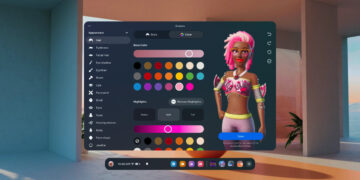Snapdragon Game Super Resolution added to the Virtual Desktop can boost game resolution to as high as Ultra
In a recent post on Qualcomm’s blog, it was announced that Virtual Desktop will utilize Super Resolution techniques on standalone VR headsets like Meta Quest 2, Pico 4, and HTC XR Elite. This update is expected to enhance the overall visual experience for users on these devices.
Super-resolution methods are image processing techniques that can enhance image quality by refining details and improving characteristics from lower-resolution inputs. By doing so, these methods can generate clear and sharp visuals while using fewer resources than native rendering.
This method aims to enhance the visual fidelity and quality of images for users who are using Virtual Desktop on lower graphical settings. According to Guy Godin, the developer behind Virtual Desktop, the feature works with Potato, Low, Medium quality (up to 120fps), and High (up to 90fps), and it utilizes Super Resolution to upscale the image to Ultra resolution under the hood.
In addition to its compatibility with lower graphical settings, Guy Godin has informed us on Reddit that Super Resolution has no additional latency and is compatible with Synchronous Space Warp. This feature is designed to improve the encoder bitrate for PCVR-to-HMD streaming and can be turned on in Virtual Desktop along with the new Snapdragon Game Super Resolution option.
As wireless VR streaming continues to improve, we can expect even more advancements in the future. The upcoming release of the Meta Quest 3 will allow for even higher performance and lower latency during wireless gameplay, thanks to the rumored inclusion of the Snapdragon XR2 Gen 2 chipset. This better chipset will help Guy Godin achieve higher resolutions, improved space warp, and other new features.



































